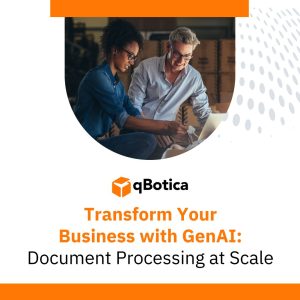In today’s fast-paced world, the value of intelligent automation is undeniable. Across various industries, businesses are leveraging intelligent automation to streamline operations, reduce costs, and enhance productivity. The COVID-19 pandemic has accelerated the need for digital transformation, making the adoption of intelligent automation not just an option, but a necessity. But what is automation and how does it transform businesses?
Intelligent automation (IA) combines artificial intelligence (AI) with traditional automation. It involves using technologies like machine learning (ML), natural language processing (NLP), and optical character recognition (OCR) to automate complex tasks that require cognitive abilities. This blend of AI and automation not only improves efficiency but also enhances decision-making processes.
Understanding Automation and Process Automation
To fully grasp the concept of intelligent automation, it’s important to understand what is automation and how it differs from process automation.
Process automation refers to the use of technology to perform repetitive tasks without human intervention. This type of automation has been around for decades, simplifying processes in manufacturing, banking, and many other sectors. It focuses on streamlining workflow and increasing efficiency by automating mundane tasks.
Core Components of Intelligent Automation
Intelligent automation goes beyond traditional automation by incorporating advanced technologies. Let’s explore the core components that make up intelligent automation:
Artificial Intelligence (AI)
Artificial intelligence automation is the backbone of IA. AI involves creating systems that can perform tasks that usually require human intelligence. This includes problem-solving, learning, and decision-making. AI enables systems to learn from data and improve over time, making automation smarter and more efficient.
Machine Learning (ML)
Machine learning is a subset of AI that uses statistical models to enable machines to learn from data. ML algorithms identify patterns and make predictions, allowing automation systems to handle tasks without explicit instructions. This capability is crucial for intelligent process automation, where systems need to adapt to new information and changing environments.
Natural Language Processing (NLP)
Natural language processing allows machines to understand and interpret human language. NLP is used in applications like chatbots and virtual assistants, enabling them to interact with users more naturally and intuitively. In the context of IA, NLP helps automate tasks that involve large volumes of text data, such as customer service and document analysis.
Computer Vision
Computer vision is a technology that enables machines to interpret visual information from the world. This includes recognizing objects, faces, and scenes in images and videos. Computer vision is used in various applications, from autonomous vehicles to quality control in manufacturing. It enhances automated technology by providing visual insights that were previously inaccessible.
Optical Character Recognition (OCR)
Optical character recognition converts different types of documents, such as scanned paper documents or images captured by a digital camera, into editable and searchable data. OCR is essential for automating data entry and document management, allowing businesses to integrate physical documents into their digital workflows.
Advantages of Intelligent Automation
The advantages of adopting intelligent automation are manifold. Here are some key benefits that businesses can experience:
Cost Reduction and Efficiency Improvement
By automating repetitive and time-consuming tasks, businesses can significantly reduce operational costs and improve efficiency. AI automation allows for faster processing times and fewer errors, leading to cost savings and higher productivity.
Enhancing Workflow Consistency and Accuracy
Intelligent automation ensures consistency and accuracy in workflows. Automated systems can perform tasks with the same level of precision every time, reducing the risk of human error and ensuring high-quality outputs.
Role in Remote Work and Evolving Job Roles
The rise of remote work has highlighted the need for robust automation solutions. IA enables businesses to maintain productivity and efficiency, even when employees are working remotely. Additionally, as automation takes over mundane tasks, employees can focus on more strategic and creative roles, driving innovation and growth.
Identifying and Addressing Skills Gaps
Intelligent automation can help identify skills gaps within the workforce. By analyzing data on employee performance and task completion, businesses can pinpoint areas where additional training is needed. This proactive approach ensures that employees remain competent and confident in their roles.
How Intelligent Automation Transforms Businesses
Intelligent automation is transforming various industries by improving efficiency, accuracy, and decision-making capabilities. Let’s explore some real-world examples of how intelligent automation is revolutionizing different sectors:
Healthcare:
In the healthcare industry, intelligent automation is a game-changer. Here’s how it’s making a difference:
- Streamlining Administrative Tasks:
- Intelligent automation helps in automating routine administrative tasks such as scheduling appointments, managing patient records, and billing. This reduces the administrative burden on healthcare professionals and allows them to focus more on patient care.
- Automated systems can handle patient registration, insurance claims processing, and other repetitive tasks, ensuring accuracy and saving time.
- Managing Patient Records:
- AI-powered systems can efficiently manage electronic health records (EHRs), ensuring that patient data is organized, accessible, and secure. This facilitates better coordination among healthcare providers and enhances patient care.
- Natural language processing (NLP) technology can extract and analyze information from unstructured medical documents, providing valuable insights for patient treatment plans.
- Improving Diagnostic Accuracy:
- AI-driven diagnostic tools can analyze medical images, such as X-rays and MRIs, with high precision. These tools can detect abnormalities and assist radiologists in making more accurate diagnoses.
- Machine learning algorithms can predict disease outbreaks by analyzing large datasets of patient information, helping in early intervention and prevention.
Finance:
The finance sector is one of the early adopters of intelligent automation. Here’s how it’s transforming the industry:
- Fraud Detection:
- Intelligent automation systems can monitor transactions in real-time, identifying patterns that may indicate fraudulent activity. By analyzing transaction data, these systems can flag suspicious activities for further investigation.
- Machine learning models improve over time, learning from past data to enhance fraud detection capabilities and reduce false positives.
- Risk Assessment:
- AI-driven tools can assess credit risk by analyzing a wide range of data, including financial histories, market trends, and economic indicators. This helps financial institutions make informed lending decisions.
- Automated risk assessment models can evaluate investment portfolios, identifying potential risks and suggesting strategies to mitigate them.
- Regulatory Compliance:
- Compliance with financial regulations is a critical aspect of the finance industry. Intelligent automation systems can ensure that all transactions adhere to regulatory requirements, reducing the risk of non-compliance.
- These systems can also generate detailed compliance reports, providing transparency and helping financial institutions stay ahead of regulatory changes.
Manufacturing
Intelligent automation is revolutionizing the manufacturing sector by optimizing production processes and enhancing quality control. Here’s how:
- Optimizing Production Processes:
- AI-powered robots and automated systems can perform complex assembly tasks with precision and speed, improving overall production efficiency. These robots can work alongside human workers, handling repetitive or hazardous tasks.
- Intelligent automation can also optimize supply chain management by predicting demand, managing inventory levels, and ensuring timely delivery of raw materials.
- Improving Quality Control:
- Automated inspection systems equipped with computer vision can detect defects in products at various stages of production. This ensures that only high-quality products reach the market, reducing the cost of rework and returns.
- Machine learning algorithms can analyze production data to identify patterns and anomalies, enabling predictive maintenance. This helps in anticipating equipment failures and scheduling maintenance before issues arise, reducing downtime.
- Reducing Downtime:
- Predictive maintenance powered by AI can monitor equipment health in real-time, identifying potential failures before they occur. This proactive approach minimizes unplanned downtime and extends the lifespan of machinery.
- Automated scheduling systems can optimize production schedules based on equipment availability, maintenance requirements, and workforce capacity, ensuring smooth and continuous operations.
Retail
Retail businesses are leveraging intelligent automation to enhance customer experiences, manage inventory, and personalize marketing strategies. Here’s how:
- Enhancing Customer Experiences:
- AI-driven chatbots and virtual assistants can handle customer inquiries 24/7, providing instant support and improving customer satisfaction. These chatbots can answer frequently asked questions, assist with product recommendations, and process orders.
- Personalized shopping experiences are made possible through AI algorithms that analyze customer behavior and preferences. Retailers can offer tailored product recommendations, promotions, and discounts based on individual customer profiles.
- Managing Inventory:
- Intelligent automation systems can optimize inventory management by predicting demand trends and managing stock levels. This ensures that popular products are always available while minimizing overstock and reducing storage costs.
- Automated inventory tracking systems can monitor stock levels in real time, generating alerts for low stock and automating reordering processes. This reduces the risk of stockouts and ensures timely replenishment.
- Personalizing Marketing Strategies:
- Machine learning algorithms can analyze customer data to create targeted marketing campaigns. By understanding customer preferences and buying patterns, retailers can deliver personalized offers and content, increasing conversion rates.
- AI-powered analytics tools can evaluate the effectiveness of marketing campaigns, providing insights into customer engagement and return on investment (ROI). This enables retailers to refine their strategies and optimize marketing spend.
AI and Intelligent Process Automation (IPA)
Intelligent process automation (IPA) is a subset of IA that focuses on automating end-to-end business processes. It combines AI technologies with process automation to create systems that can handle complex workflows without human intervention.
How AI Enhances Process Automation
AI enhances process automation by enabling systems to learn from data, adapt to changes, and make decisions. For example, AI can analyze customer feedback to improve product development or monitor supply chain operations to optimize logistics.
Examples of AI-driven automation in Enterprise Settings
In enterprise settings, AI-driven automation is used for various tasks, including:
- Automating customer support with AI chatbots
- Streamlining HR processes with AI-powered recruitment tools
- Enhancing cybersecurity with AI-driven threat detection
The Future of Automated Intelligence
The future of automation lies in the concept of automated intelligence. But what is automated intelligence? It refers to systems that not only automate tasks but also possess the ability to learn, reason, and make decisions independently. Automated intelligence represents the next frontier in automation, where machines become true partners in business operations.
Predicting Future Trends in Intelligent Automation
As technology continues to evolve, we can expect several trends in intelligent automation:
- Increased adoption of AI in various industries
- Greater emphasis on ethical AI and responsible automation
- Integration of AI with other emerging technologies, such as blockchain and IoT
- Continued growth of cloud-based automation solutions
Preparing for a Fully Automated Enterprise Environment
To prepare for a fully automated enterprise environment, businesses must invest in the right technologies and develop a clear automation strategy. This includes:
- Identifying processes that can benefit from automation
- Implementing scalable automation solutions
- Training employees to work alongside automated systems
- Continuously monitoring and optimizing automation performance
Key Technologies in Intelligent Automation
Several key technologies drive the advancement of intelligent automation:
Advanced Analytics and Insights
Advanced analytics play a crucial role in intelligent automation by providing insights that guide decision-making. Data-driven analytics help businesses identify opportunities for automation and measure the impact of automated processes.
Flexible, Cloud-Native Automation
Cloud-native automation solutions offer scalability and flexibility, allowing businesses to expand their automation efforts as needed. These solutions can be easily integrated with existing systems and provide real-time updates and analytics.
Challenges and Solutions in Implementing Intelligent Automation
Despite its many benefits, implementing intelligent automation can pose challenges. Common obstacles include:
- Resistance to change from employees
- High initial investment costs
- Integration issues with existing systems
- Data privacy and security concerns
Strategies to Overcome These Challenges
To overcome these challenges, businesses can adopt the following strategies:
- Educate and train employees on the benefits of automation
- Start with small, manageable automation projects
- Partner with experienced automation providers like qBotica
- Implement robust data security measures
Why Choose qBotica for Intelligent Automation?
qBotica stands out as a leading provider of intelligent automation solutions. Here’s why businesses should choose qBotica:
- Expertise: With years of experience in automation, qBotica offers tailored solutions that meet the unique needs of each client.
- Innovation: qBotica leverages the latest technologies to deliver cutting-edge automation solutions.
- Support: qBotica provides comprehensive support, from initial consultation to implementation and beyond.
- Results: Proven track record of helping businesses achieve significant cost savings and efficiency improvements.
Conclusion
In conclusion, intelligent automation is revolutionizing the way businesses operate. By integrating AI and other advanced technologies, intelligent automation enhances efficiency, reduces costs, and drives innovation. qBotica is at the forefront of this transformation, offering unparalleled expertise and support to help businesses harness the power of intelligent automation.
For more information on how qBotica can help your business thrive in the era of automation, visit qBotica.




